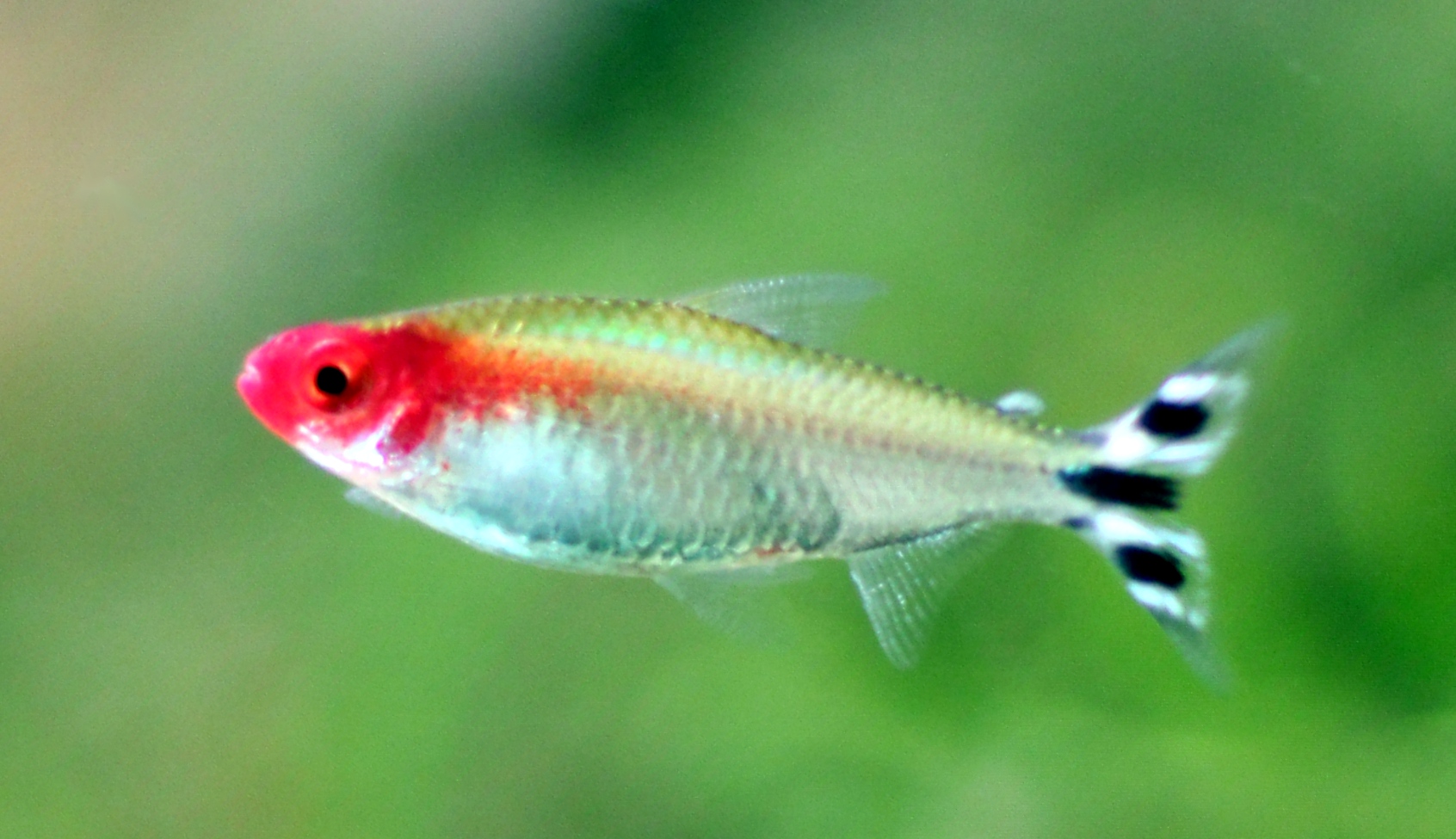Rummy-Nose Tetra
The Vibrant Shoal: An In-Depth Guide to Caring for Rummy Nose Tetras
Instantly recognisable by their striking crimson nose and smart, black-and-white striped tail, the Rummy Nose Tetra is a cherished favourite among aquarium enthusiasts in the UK. More than just a pretty face, these active and engaging fish bring a lively dynamic to any well-maintained community tank. However, their beauty is a direct reflection of their well-being, making proper care paramount to enjoying their full splendour. This guide will delve into the essential requirements for keeping these captivating characins thriving.
The term ‘Rummy Nose Tetra’ often refers to three distinct but very similar species: the true Rummy Nose Tetra (Hemigrammus rhodostomus), the Brilliant Rummy Nose Tetra (Hemigrammus bleheri), and the False Rummy Nose Tetra (Petitella georgiae). While subtle differences exist, their care requirements are virtually identical, and they are often sold interchangeably in the aquatic trade.

The Ideal Aquatic Environment: Water Parameters
Native to the blackwater tributaries of the Amazon River in South America, Rummy Nose Tetras flourish in specific water conditions that mimic their natural habitat. Their vibrant red nose is an excellent indicator of their health and happiness; a pale or faded nose is often the first sign of stress or poor water quality.
Water Temperature
These are tropical fish that require a consistently warm environment. The ideal temperature range is between 24°C and 28°C (75°F to 82°F). A reliable aquarium heater is essential to maintain this stable temperature, especially during the UK’s colder months.
Water Hardness
Rummy Nose Tetras unequivocally prefer soft water. Their native waters are low in dissolved minerals. Therefore, aiming for a general hardness (GH) of 2 to 8 dGH is optimal. Hard water can cause stress and long-term health issues. For aquarists in hard water areas of the UK, using reverse osmosis (RO) water mixed with a small amount of tap water or remineralised with specific salts is the best approach to achieve the desired softness.
pH Level
In line with their blackwater origins, a slightly acidic to neutral pH is crucial. The ideal range is between 6.0 and 7.0. A pH above 7.5 will cause significant stress. The use of driftwood, Indian almond leaves, or alder cones can help to naturally lower the pH and release beneficial tannins, which will also give the water a slight tea-coloured tint that these fish appreciate.
Setting Up Your Rummy Nose Haven
A well-thought-out aquarium setup is vital for the well-being of these active swimmers.
Tank Size
While small in stature, Rummy Nose Tetras are very active and need ample swimming space. A minimum tank size of 90 litres (around 20 gallons) or more will allow for a more substantial and happier shoal. Bare in mind Rummy’s are the one of the best schooling fish and will appreciate tanks of a bigger size
Filtration
Good filtration is necessary to maintain clean water, but these fish do not appreciate strong currents. An external canister filter with a spray bar to diffuse the outflow or a gentle internal filter is ideal.
Substrate and Décor
A dark-coloured, fine-grain sand or smooth gravel substrate will help to show off their colours and mimic their natural environment. The aquarium should be well-planted with both rooted and floating plants. Live plants provide security, help to maintain water quality, and create a more naturalistic environment. Driftwood is a must-have, not only for aesthetics but also for its ability to release tannins.
Diet and Feeding
Rummy Nose Tetras are omnivores and should be offered a varied diet. A high-quality flake or micro-pellet food can form the basis of their diet. To supplement this, and to encourage their best colouration, regular feedings of live or frozen foods are highly recommended. This can include:
- Brine shrimp
- Daphnia
- Bloodworm (sparingly, as they can be rich)
- Blackworm
Feed small amounts once or twice a day, only offering what they can consume within a couple of minutes to avoid polluting the tank.

Social Dynamics: Tank Mates and Shoaling Behaviour
Rummy Nose Tetras are a quintessential shoaling fish and must be kept in groups. A minimum of six individuals is essential, with larger groups of ten or more being preferable. In a larger group, they will feel more secure, their colours will be more vibrant, and you will be treated to their fascinating synchronised swimming displays.
They are a peaceful species, making them excellent candidates for a community aquarium. Suitable tank mates include:
- Other small, peaceful tetras (e.g., Cardinal Tetras, Ember Tetras)
- Corydoras catfish
- Otocinclus catfish
- Dwarf Gouramis
- Rasboras
Avoid keeping them with large, boisterous, or aggressive fish that could easily intimidate or prey upon them.
Health and Disease
A healthy Rummy Nose Tetra is active and has a bright red nose. A pale nose is a clear indicator of stress, which can be caused by poor water quality, incorrect water parameters, or bullying from unsuitable tank mates.
They are susceptible to common freshwater fish diseases such as Ich (White Spot Disease), especially when stressed. Maintaining pristine water conditions is the best preventative measure. Quarantine any new additions to your aquarium for at least four weeks before introducing them to the main tank.
Useful Statistics at a Glance
| Parameter | Recommended Value |
|---|---|
| Scientific Name(s) | Hemigrammus rhodostomus, H. bleheri, Petitella georgiae |
| Common Name | Rummy Nose Tetra |
| Origin | South America (Amazon River Basin) |
| Adult Size | 4-5 cm (1.5-2 inches) |
| Lifespan | 5-8 years with proper care |
| Minimum Tank Size | 90 Litres (approx. 20 Gallons) But prefer bigger |
| Water Temperature | 24°C – 28°C (75°F – 82°F) |
| Water Hardness (GH) | 2 – 8 dGH (Soft water is essential) |
| pH Level | 6.0 – 7.0 |
| Temperament | Peaceful, shoaling |
| Minimum Shoal Size | 6+ (10+ is recommended) |
| Diet | Omnivore |
| Breeding | Difficult |
In conclusion, the Rummy Nose Tetra is a truly rewarding fish to keep. By providing them with the correct water parameters, a suitable environment, and the company of their own kind, you will be rewarded with a dazzling display of colour and activity that will be a highlight of your freshwater aquarium. Their sensitivity to water conditions makes them a “canary in the coal mine” for aquarists, encouraging the highest standards of tank maintenance, which ultimately benefits all the inhabitants of the aquarium.


